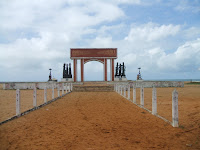I love reading The Express on my way to work in the morning. It's not as bulky as the Washington Post and it serves my ADHD first thing in the morning. But this morning (September 30,2011) I found my head exploding as I read The Express on what I consider to be an otherwise boring morning commute.
"In a twist to notions of race identity, new 2010 census figures show an unexpected reason behind a renewed growth in the U.S. white population: more Hispanics listing themselves as white... The shift is due to recent census changes that emphasize "Hispanic" as a ethnicity, not a race." Courtesy of the AP.
As a black American I found myself infuriated. Your probably wondering, why? On most questionnaires where race is required, you might have noticed "black, African-American" as one choice. I am no more African-American than a non-Hispanic is Hispanic. But lets get to the heart of the matter ethnicity.
What exactly does ethnicity mean? According to Webster ethnic is " of or relating to large groups of people classed according to common racial, national, tribal, religious, linguistic, or cultural origin or background". Do I have a common tribal, religious, linguistic, or cultural origin to those living in Africa? Hell, no and I can say that having lived there for three years. To Africans I am a white American. But to white Americans I am a African-American.
If your wondering what do I call myself? I'm American.
"In a twist to notions of race identity, new 2010 census figures show an unexpected reason behind a renewed growth in the U.S. white population: more Hispanics listing themselves as white... The shift is due to recent census changes that emphasize "Hispanic" as a ethnicity, not a race." Courtesy of the AP.
As a black American I found myself infuriated. Your probably wondering, why? On most questionnaires where race is required, you might have noticed "black, African-American" as one choice. I am no more African-American than a non-Hispanic is Hispanic. But lets get to the heart of the matter ethnicity.
What exactly does ethnicity mean? According to Webster ethnic is " of or relating to large groups of people classed according to common racial, national, tribal, religious, linguistic, or cultural origin or background". Do I have a common tribal, religious, linguistic, or cultural origin to those living in Africa? Hell, no and I can say that having lived there for three years. To Africans I am a white American. But to white Americans I am a African-American.
If your wondering what do I call myself? I'm American.

















